1 of 14

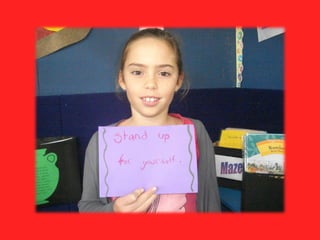

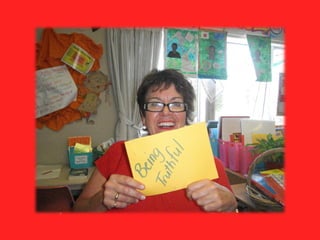
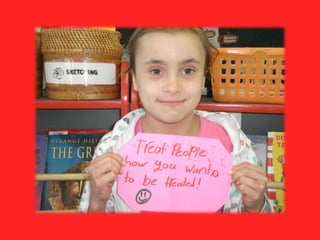

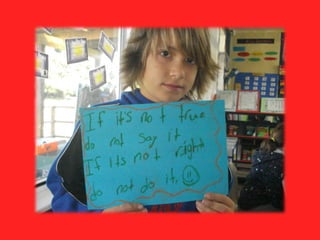

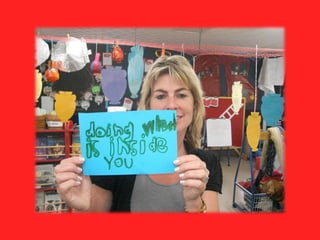
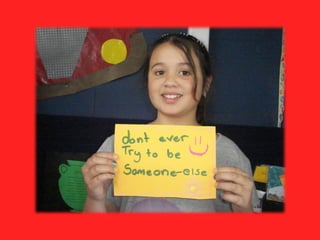


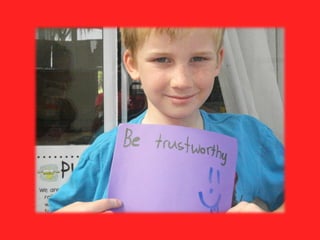
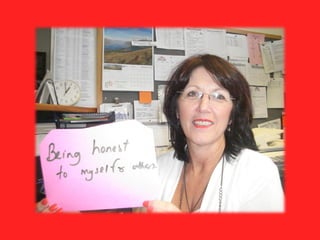
Ad
Recommended
Accountability
Accountabilityradhikarele
╠²
The document discusses strategies for fostering accountability in students. It suggests having students create "Self Help Plan Sheets" when grades are low to outline goals and steps to improve. This puts the responsibility on students to take a proactive approach. The document also recommends having students call parents when misbehaving to admit wrongdoing themselves. Establishing clear routines and awarding points for positive actions can further encourage student accountability. The reflective approach of having students grade their daily commitment can also help them recognize their responsibilities.Success presentation
Success presentationrosietran
╠²
The document outlines the author's definition of success, short-term goals, long-term goals, role model, and favorite success quotes. The author defines success as identifying one's strengths and weaknesses. Their short-term goals are to gain knowledge to become a pharmacist, volunteer, and maintain high grades. Long-term, they aim to get a high PCAT score and become a pharmacist. Their mother inspires them by teaching a do-it-yourself ethic. Favorite quotes emphasize that success requires effort and learning from mistakes and failures.Knowledge and Knowing
Knowledge and KnowingHathib KK
╠²
The document discusses various concepts including knowledge, information, skill, belief, truth, reason, teaching, training, and learning. It emphasizes the importance of both theoretical and practical knowledge in education, as well as the different sources and ways of acquiring knowledge. Schooling is portrayed as a vital process for systematic knowledge arrangement, concept formation, and developing critical skills.Honesty and integrity
Honesty and integrityAnnemieke Cloosterman
╠²
Integrity requires honesty, but honesty alone does not guarantee integrity. While integrity relies on honesty, one need not always be completely transparent with others. True integrity means being honest with oneself by examining one's values and acting upon them with respect for others.Defining Success
Defining SuccessJohn Fallon
╠²
The document outlines various principles and traits necessary for achieving success across multiple aspects of life, including career, relationships, health, and personal development. It emphasizes the importance of self-awareness, goal-setting, and continuous improvement, as well as surrounding oneself with positive influences and embracing change. Key actions include being responsible, taking risks, maintaining a sense of urgency, and fostering creativity and collaboration.Personal Integrity
Personal Integritydheva B
╠²
Integrity means adhering to a moral code and acting with honesty, courage, and consistency. It requires having the courage to know what is right and say what you observe without compromise. A person of integrity can be trusted, as their actions are congruent with their beliefs and values, leading to self-respect. Maintaining integrity is important for leadership roles and students' character development.Accountability =╠Ė responsibility
Accountability =╠Ė responsibilityChristopher Avery
╠²
The document discusses the distinction and relationship between accountability and personal responsibility in organizational contexts. It argues that prioritizing personal responsibility leads to happier individuals and higher performance, while a focus on accountability can result in unhappiness and low productivity. The text encourages leaders to foster a mindset of shared responsibility to enhance trust and commitment within their teams.Accountability, responsibility & ownership
Accountability, responsibility & ownershipDerek Winter
╠²
This document discusses the three domains of an ARO culture: personal accountability, mutual responsibility, and shared ownership. It defines each domain and how individuals should behave within them. Personal accountability refers to the areas an individual controls and will be evaluated on. Mutual responsibility involves areas impacted by one's work where input is shared. Shared ownership includes all aspects of the organization's mission and brand. The document provides guidance on when to engage in each domain and potential vulnerabilities like lack of clarity or competency creep. Overall it outlines an performance-focused culture based on transparency, collaboration, and clear roles.Solar eclipse
Solar eclipserjensen
╠²
A solar eclipse occurred where the moon passed between the earth and sun, blocking 87% of the sun's light and casting a dark shadow over Auckland, New Zealand, making it almost pitch black. The diagram shows the moon passing in front of the sun from the perspective of earth. The video was created by Adam, Dylan, and Zac to document the solar eclipse.Part 2 elng pedagogyslideshare
Part 2 elng pedagogyslidesharerjensen
╠²
This document provides guidance on developing an effective e-learning pedagogy. It outlines six questions educators should consider when selecting and integrating digital content into the curriculum. The questions focus on ensuring the content meets student needs and interests, how it will be embedded into learning plans with appropriate offline support, and how student collaboration and assessment will be incorporated. It also provides examples of how different digital tools have been used to support learning across lower, middle, and upper primary levels.Part 2 elng pedagogy
Part 2 elng pedagogyrjensen
╠²
This document outlines an e-learning exploration day with the following aims: 1) to review educator e-competencies and set goals, and 2) to explore what constitutes effective e-learning pedagogy. The day will be considered successful if educators are motivated by ICT skills and gain practical ideas for technology integration, as well as set goals for the upcoming term. Additionally, the day aims to foster a shared understanding of what quality teaching looks like when integrated with technology. The document provides an overview of effective e-learning pedagogy principles and examples of technology tools and platforms that can be used at different primary grade levels to engage students.Part1 ecompetencies
Part1 ecompetenciesrjensen
╠²
This document outlines goals and strategies for an exploration of effective e-learning pedagogy. It discusses motivating staff through ICT integration, sharing understanding of quality teaching with technology, and setting goals for the upcoming school term and beyond. Specific strategies are provided around electronic communication, maintaining an online class presence, facilitating cyber safety learning, using online resources to support te reo M─üori, extending personal professional learning, leading learning through ICT, enhancing planning through collaboration, ensuring purposeful technology use, activating beyond-classroom connections, facilitating student-led use of ICT, responding to student interests with technology, understanding learning in a bicultural context, and using online tools to support data management.Conrad's wall 2
Conrad's wall 2rjensen
╠²
Conrad Smith of the All Blacks is raising money to build a wall around an orphanage in Kenya called Holding Hands Orphanage. The wall will provide shelter and protection for the children living there. Students at the school are collecting donations of money and cents to purchase bricks for Conrad's Wall and help the orphans in Kenya. They are encouraging others to donate anything they can to support this cause.Spike Learning Caves - Quick Workshop
Spike Learning Caves - Quick Workshoprjensen
╠²
Learning Caves are password protected areas in Spike@school that allow teachers to create personalized learning spaces for students, with each cave containing a project description and optional additional resources like links, files, pages, messages, and quizzes. The document introduces Learning Caves and their creation, then outlines examples from rooms 14 and the Tall Poppies group before prompting the creation of a demonstration cave along with a supporting handout.Innovation
Innovationrjensen
╠²
The document is about a guessing game where Troy and Tyler discovered the word "Innovation" in 3 or less sentences.Apprasial2ndmarch
Apprasial2ndmarchrjensen
╠²
This document discusses the "teaching as inquiry" framework for teacher appraisal. It emphasizes reflection on students' learning needs and a teacher's own professional growth. Teachers are encouraged to formulate inquiries by examining data on student learning and identifying areas for improvement. The inquiries should be proactive, solution-seeking, and avoid blaming others. Evidence from multiple sources is needed to show how a teacher's professional practice meets registered teacher criteria. A successful inquiry will be aligned to school and student needs, reference the teaching as inquiry process, and embed teacher standards through self-reflection and collaboration with colleagues.Rm14respect
Rm14respectrjensen
╠²
Respect at Tauriko School involves listening to others, including those without friends, helping others in need, treating all people with kindness even if they are unkind in return, and looking out for the safety and well-being of peers, such as telling someone to get out of a tree if they are climbing where they should not be.Digistore - Getting Started
Digistore - Getting Startedrjensen
╠²
The document discusses a digital storehouse that will allow users to log in with single sign-on, search and view content in different formats like lists, maps and timelines. It will let users view details of items, rate, comment and tag them. Users can create learning paths by selecting items. The storehouse aims to support sharing of digital content and responding to needs. It provides contact information for getting started and learning more.Digistore - Getting Started
Digistore - Getting Startedrjensen
╠²
The document discusses a digital storehouse that will allow users to log in with single sign-on, search and view content in different formats like lists, maps and timelines. It will let users view details of items, rate, comment and tag them. Users can create learning paths by selecting items. The storehouse aims to support sharing of digital content and responding to needs. It provides contact information for getting started and learning more.Digital Dozen
Digital Dozenrjensen
╠²
Staff at School Support Services are making use of various digital tools to support their work. Some tools being used include online surveys like Survey Monkey to gather feedback, videos from sites like TeacherTube and YouTube to engage learners, and Skype for video conferencing. Other tools mentioned are Wordle for creating word clouds, Google Desktop for file searching, social bookmarking with Delicious, wikis on Wikispaces, blogs, digital resources on Digistore, and slide sharing on ║▌║▌▀Żshare. The document provides examples of how different staff members are using these tools in their roles.Legend
Legendrjensen
╠²
This document introduces members of the Payne family including the author's mother Erin Payne, father Ted Payne, aunt Kayla Tamihana and her son Peyton Lilly-Field, sister Jaydah Payne, brother Tyrese Payne, and themselves (Legyn). It provides details about each family member such as their interests, ages, where they live, and connections to local iwi and marae.literacy juniors
literacy juniorsrjensen
╠²
The document appears to be a slideshow for teaching letters of the alphabet to young students. It prompts students to find various lowercase and capital letters hidden in pictures, including L, M, H, l, D, O, S, T, w, b, n, Y. It also asks students which letters they can see in trees and what capital letter is hiding in one picture.E Learning BOP
E Learning BOPrjensen
╠²
This document discusses setting up a network to better support e-learning and staff in schools. Leaders in each school will support staff's use of e-learning. The document also mentions speed geeking, where people discuss education topics, and evaluating e-learning in schools using maturity models.Online Professional Learning Communities
Online Professional Learning Communitiesrjensen
╠²
The document discusses setting up an online learning community to support a group of educators. It considers factors like the purpose of the community, how collaboration and trust would be promoted online, and who would facilitate discussions. Ideas are shared about ensuring social, cognitive, and teaching presence within the community. The document emphasizes that careful planning is needed to develop a successful online community, though experimentation is also important given the evolving nature of online spaces.K12 Tableau User Group virtual event June 18, 2025
K12 Tableau User Group virtual event June 18, 2025dogden2
╠²
National K12 Tableau User Group: June 2025 meeting slidesMore Related Content
More from rjensen (20)
Solar eclipse
Solar eclipserjensen
╠²
A solar eclipse occurred where the moon passed between the earth and sun, blocking 87% of the sun's light and casting a dark shadow over Auckland, New Zealand, making it almost pitch black. The diagram shows the moon passing in front of the sun from the perspective of earth. The video was created by Adam, Dylan, and Zac to document the solar eclipse.Part 2 elng pedagogyslideshare
Part 2 elng pedagogyslidesharerjensen
╠²
This document provides guidance on developing an effective e-learning pedagogy. It outlines six questions educators should consider when selecting and integrating digital content into the curriculum. The questions focus on ensuring the content meets student needs and interests, how it will be embedded into learning plans with appropriate offline support, and how student collaboration and assessment will be incorporated. It also provides examples of how different digital tools have been used to support learning across lower, middle, and upper primary levels.Part 2 elng pedagogy
Part 2 elng pedagogyrjensen
╠²
This document outlines an e-learning exploration day with the following aims: 1) to review educator e-competencies and set goals, and 2) to explore what constitutes effective e-learning pedagogy. The day will be considered successful if educators are motivated by ICT skills and gain practical ideas for technology integration, as well as set goals for the upcoming term. Additionally, the day aims to foster a shared understanding of what quality teaching looks like when integrated with technology. The document provides an overview of effective e-learning pedagogy principles and examples of technology tools and platforms that can be used at different primary grade levels to engage students.Part1 ecompetencies
Part1 ecompetenciesrjensen
╠²
This document outlines goals and strategies for an exploration of effective e-learning pedagogy. It discusses motivating staff through ICT integration, sharing understanding of quality teaching with technology, and setting goals for the upcoming school term and beyond. Specific strategies are provided around electronic communication, maintaining an online class presence, facilitating cyber safety learning, using online resources to support te reo M─üori, extending personal professional learning, leading learning through ICT, enhancing planning through collaboration, ensuring purposeful technology use, activating beyond-classroom connections, facilitating student-led use of ICT, responding to student interests with technology, understanding learning in a bicultural context, and using online tools to support data management.Conrad's wall 2
Conrad's wall 2rjensen
╠²
Conrad Smith of the All Blacks is raising money to build a wall around an orphanage in Kenya called Holding Hands Orphanage. The wall will provide shelter and protection for the children living there. Students at the school are collecting donations of money and cents to purchase bricks for Conrad's Wall and help the orphans in Kenya. They are encouraging others to donate anything they can to support this cause.Spike Learning Caves - Quick Workshop
Spike Learning Caves - Quick Workshoprjensen
╠²
Learning Caves are password protected areas in Spike@school that allow teachers to create personalized learning spaces for students, with each cave containing a project description and optional additional resources like links, files, pages, messages, and quizzes. The document introduces Learning Caves and their creation, then outlines examples from rooms 14 and the Tall Poppies group before prompting the creation of a demonstration cave along with a supporting handout.Innovation
Innovationrjensen
╠²
The document is about a guessing game where Troy and Tyler discovered the word "Innovation" in 3 or less sentences.Apprasial2ndmarch
Apprasial2ndmarchrjensen
╠²
This document discusses the "teaching as inquiry" framework for teacher appraisal. It emphasizes reflection on students' learning needs and a teacher's own professional growth. Teachers are encouraged to formulate inquiries by examining data on student learning and identifying areas for improvement. The inquiries should be proactive, solution-seeking, and avoid blaming others. Evidence from multiple sources is needed to show how a teacher's professional practice meets registered teacher criteria. A successful inquiry will be aligned to school and student needs, reference the teaching as inquiry process, and embed teacher standards through self-reflection and collaboration with colleagues.Rm14respect
Rm14respectrjensen
╠²
Respect at Tauriko School involves listening to others, including those without friends, helping others in need, treating all people with kindness even if they are unkind in return, and looking out for the safety and well-being of peers, such as telling someone to get out of a tree if they are climbing where they should not be.Digistore - Getting Started
Digistore - Getting Startedrjensen
╠²
The document discusses a digital storehouse that will allow users to log in with single sign-on, search and view content in different formats like lists, maps and timelines. It will let users view details of items, rate, comment and tag them. Users can create learning paths by selecting items. The storehouse aims to support sharing of digital content and responding to needs. It provides contact information for getting started and learning more.Digistore - Getting Started
Digistore - Getting Startedrjensen
╠²
The document discusses a digital storehouse that will allow users to log in with single sign-on, search and view content in different formats like lists, maps and timelines. It will let users view details of items, rate, comment and tag them. Users can create learning paths by selecting items. The storehouse aims to support sharing of digital content and responding to needs. It provides contact information for getting started and learning more.Digital Dozen
Digital Dozenrjensen
╠²
Staff at School Support Services are making use of various digital tools to support their work. Some tools being used include online surveys like Survey Monkey to gather feedback, videos from sites like TeacherTube and YouTube to engage learners, and Skype for video conferencing. Other tools mentioned are Wordle for creating word clouds, Google Desktop for file searching, social bookmarking with Delicious, wikis on Wikispaces, blogs, digital resources on Digistore, and slide sharing on ║▌║▌▀Żshare. The document provides examples of how different staff members are using these tools in their roles.Legend
Legendrjensen
╠²
This document introduces members of the Payne family including the author's mother Erin Payne, father Ted Payne, aunt Kayla Tamihana and her son Peyton Lilly-Field, sister Jaydah Payne, brother Tyrese Payne, and themselves (Legyn). It provides details about each family member such as their interests, ages, where they live, and connections to local iwi and marae.literacy juniors
literacy juniorsrjensen
╠²
The document appears to be a slideshow for teaching letters of the alphabet to young students. It prompts students to find various lowercase and capital letters hidden in pictures, including L, M, H, l, D, O, S, T, w, b, n, Y. It also asks students which letters they can see in trees and what capital letter is hiding in one picture.E Learning BOP
E Learning BOPrjensen
╠²
This document discusses setting up a network to better support e-learning and staff in schools. Leaders in each school will support staff's use of e-learning. The document also mentions speed geeking, where people discuss education topics, and evaluating e-learning in schools using maturity models.Online Professional Learning Communities
Online Professional Learning Communitiesrjensen
╠²
The document discusses setting up an online learning community to support a group of educators. It considers factors like the purpose of the community, how collaboration and trust would be promoted online, and who would facilitate discussions. Ideas are shared about ensuring social, cognitive, and teaching presence within the community. The document emphasizes that careful planning is needed to develop a successful online community, though experimentation is also important given the evolving nature of online spaces.Recently uploaded (20)
K12 Tableau User Group virtual event June 18, 2025
K12 Tableau User Group virtual event June 18, 2025dogden2
╠²
National K12 Tableau User Group: June 2025 meeting slidesHow to Manage Different Customer Addresses in Odoo 18 Accounting
How to Manage Different Customer Addresses in Odoo 18 AccountingCeline George
╠²
A business often have customers with multiple locations such as office, warehouse, home addresses and this feature allows us to associate with different addresses with each customer streamlining the process of creating sales order invoices and delivery orders.2025 June Year 9 Presentation: Subject selection.pptx
2025 June Year 9 Presentation: Subject selection.pptxmansk2
╠²
2025 June Year 9 Presentation: Subject selectionPhoto chemistry Power Point Presentation
Photo chemistry Power Point Presentationmprpgcwa2024
╠²
Photochemistry is the branch of chemistry that deals with the study of chemical reactions and processes initiated by light.
Photochemistry involves the interaction of light with molecules, leading to electronic excitation. Energy from light is transferred to molecules, initiating chemical reactions.
Photochemistry is used in solar cells to convert light into electrical energy.
It is used Light-driven chemical reactions for environmental remediation and synthesis. Photocatalysis helps in pollution abatement and environmental cleanup. Photodynamic therapy offers a targeted approach to treating diseases It is used in Light-activated treatment for cancer and other diseases.
Photochemistry is used to synthesize complex organic molecules.
Photochemistry contributes to the development of sustainable energy solutions.LAZY SUNDAY QUIZ "A GENERAL QUIZ" JUNE 2025 SMC QUIZ CLUB, SILCHAR MEDICAL CO...
LAZY SUNDAY QUIZ "A GENERAL QUIZ" JUNE 2025 SMC QUIZ CLUB, SILCHAR MEDICAL CO...Ultimatewinner0342
╠²
¤¦Ā Lazy Sunday Quiz | General Knowledge Trivia by SMC Quiz Club ŌĆō Silchar Medical College
Presenting the Lazy Sunday Quiz, a fun and thought-provoking general knowledge quiz created by the SMC Quiz Club of Silchar Medical College & Hospital (SMCH). This quiz is designed for casual learners, quiz enthusiasts, and competitive teams looking for a diverse, engaging set of questions with clean visuals and smart clues.
¤Ä» What is the Lazy Sunday Quiz?
The Lazy Sunday Quiz is a light-hearted yet intellectually rewarding quiz session held under the SMC Quiz Club banner. ItŌĆÖs a general quiz covering a mix of current affairs, pop culture, history, India, sports, medicine, science, and more.
Whether youŌĆÖre hosting a quiz event, preparing a session for students, or just looking for quality trivia to enjoy with friends, this PowerPoint deck is perfect for you.
¤ōŗ Quiz Format & Structure
Total Questions: ~50
Types: MCQs, one-liners, image-based, visual connects, lateral thinking
Rounds: Warm-up, Main Quiz, Visual Round, Connects (optional bonus)
Design: Simple, clear slides with answer explanations included
Tools Needed: Just a projector or screen ŌĆō ready to use!
¤¦Ā Who Is It For?
College quiz clubs
School or medical students
Teachers or faculty for classroom engagement
Event organizers needing quiz content
Quizzers preparing for competitions
Freelancers building quiz portfolios
¤ÆĪ Why Use This Quiz?
Ready-made, high-quality content
Curated with lateral thinking and storytelling in mind
Covers both academic and pop culture topics
Designed by a quizzer with real event experience
Usable in inter-college fests, informal quizzes, or Sunday brain workouts
¤ōÜ About the Creators
This quiz has been created by Rana Mayank Pratap, an MBBS student and quizmaster at SMC Quiz Club, Silchar Medical College. The club aims to promote a culture of curiosity and smart thinking through weekly and monthly quiz events.
¤öŹ SEO Tags:
quiz, general knowledge quiz, trivia quiz, ║▌║▌▀ŻShare quiz, college quiz, fun quiz, medical college quiz, India quiz, pop culture quiz, visual quiz, MCQ quiz, connect quiz, science quiz, current affairs quiz, SMC Quiz Club, Silchar Medical College
¤ōŻ Reuse & Credit
YouŌĆÖre free to use or adapt this quiz for your own events or sessions with credit to:
SMC Quiz Club ŌĆō Silchar Medical College & Hospital
Curated by: Rana Mayank PratapGladiolous Cultivation practices by AKL.pdf
Gladiolous Cultivation practices by AKL.pdfkushallamichhame
╠²
This includes the overall cultivation practices of Rose prepared by:
Kushal Lamichhane (AKL)
Instructor
Shree Gandhi Adarsha Secondary School
Kageshowri Manohara-09, Kathmandu, Nepal
Peer Teaching Observations During School Internship
Peer Teaching Observations During School InternshipAjayaMohanty7
╠²
FOR B.ED,M.ED,M.A.EDUCATION AND ANY STUDENT OF TEACHER EDUCATIONJune 2025 Progress Update With Board Call_In process.pptx
June 2025 Progress Update With Board Call_In process.pptxInternational Society of Service Innovation Professionals
╠²
---
June 25 ISSIP Event - slides in process
20250618 PPre-Event Presentation Summary - Progress Update with Board Series June 25
ISSIP Website Upcoming Events Description: https://issip.org/event/semi-annual-issip-progress-call/
Register here (even if you cannot attend live online, all who register will get link to recording and slides post-event): https://docs.google.com/forms/d/e/1FAIpQLSdThrop1rafOCo4PQkYiS2XApclJuMjYONEHRMGBsceRdcQqg/viewform
This pre-event presentation: /slideshow/june-2025-progress-update-with-board-call_in-process-pptx/280718770
This pre-event recording: https://youtu.be/Shjgd5o488o
---M&A5 Q1 1 differentiate evolving early Philippine conventional and contempora...
M&A5 Q1 1 differentiate evolving early Philippine conventional and contempora...ErlizaRosete
╠²
MAPEH 6 QI WEEK ITanja Vujicic - PISA for Schools contact Info
Tanja Vujicic - PISA for Schools contact InfoEduSkills OECD
╠²
Tanja Vujicic, Senior Analyst and PISA for SchoolŌĆÖs Project Manager at the OECD spoke at the OECD webinar 'Turning insights into impact: What do early case studies reveal about the power of PISA for Schools?' on 20 June 2025
PISA for Schools is an OECD assessment that evaluates 15-year-old performance on reading, mathematics, and science. It also gathers insights into studentsŌĆÖ learning environment, engagement and well-being, offering schools valuable data that help them benchmark performance internationally and improve education outcomes. A central ambition, and ongoing challenge, has been translating these insights into meaningful actions that drives lasting school improvement. OBSESSIVE COMPULSIVE DISORDER.pptx IN 5TH SEMESTER B.SC NURSING, 2ND YEAR GNM...
OBSESSIVE COMPULSIVE DISORDER.pptx IN 5TH SEMESTER B.SC NURSING, 2ND YEAR GNM...parmarjuli1412
╠²
OBSESSIVE COMPULSIVE DISORDER INCLUDED TOPICS ARE INTRODUCTION, DEFINITION OF OBSESSION, DEFINITION OF COMPULSION, MEANING OF OBSESSION AND COMPULSION, DEFINITION OF OBSESSIVE COMPULSIVE DISORDER, EPIDERMIOLOGY OF OCD, ETIOLOGICAL FACTORS OF OCD, CLINICAL SIGN AND SYMPTOMS OF OBSESSION AND COMPULSION, MANAGEMENT INCLUDED PHARMACOTHERAPY(ANTIDEPRESSANT DRUG+ANXIOLYTIC DRUGS), PSYCHOTHERAPY, NURSING MANAGEMENT(ASSESSMENT+DIAGNOSIS+NURSING INTERVENTION+EVALUATION)) F-BLOCK ELEMENTS POWER POINT PRESENTATIONS
F-BLOCK ELEMENTS POWER POINT PRESENTATIONSmprpgcwa2024
╠²
F-block elements are a group of elements in the periodic table that have partially filled f-orbitals. They are also known as inner transition elements. F-block elements are divided into two series:
1.Lanthanides (La- Lu) These elements are also known as rare earth elements.
2.Actinides (Ac- Lr): These elements are radioactive and have complex electronic configurations.
F-block elements exhibit multiple oxidation states due to the availability of f-orbitals.
2. Many f-block compounds are colored due to f-f transitions.
3. F-block elements often exhibit paramagnetic or ferromagnetic behavior.4. Actinides are radioactive.
F-block elements are used as catalysts in various industrial processes.
Actinides are used in nuclear reactors and nuclear medicine.
F-block elements are used in lasers and phosphors due to their luminescent properties.
F-block elements have unique electronic and magnetic properties.Filipino 9 Maikling Kwento Ang Ama Panitikang Asiyano
Filipino 9 Maikling Kwento Ang Ama Panitikang Asiyanosumadsadjelly121997
╠²
Filipino 9 Maikling Kwento Ang Ama Panitikang AsiyanoList View Components in Odoo 18 - Odoo ║▌║▌▀Żs
List View Components in Odoo 18 - Odoo ║▌║▌▀ŻsCeline George
╠²
In Odoo, there are many types of views possible like List view, Kanban view, Calendar view, Pivot view, Search view, etc.
The major change that introduced in the Odoo 18 technical part in creating views is the tag <tree> got replaced with the <list> for creating list views. How payment terms are configured in Odoo 18
How payment terms are configured in Odoo 18Celine George
╠²
Payment terms in Odoo 18 help define the conditions for when invoices are due. This feature can split payments into multiple parts and automate due dates based on specific rules.This is why students from these 44 institutions have not received National Se...
This is why students from these 44 institutions have not received National Se...Kweku Zurek
╠²
This is why students from these 44 institutions have not received National Service PIN codes (LIST)Learning Styles Inventory for Senior High School Students
Learning Styles Inventory for Senior High School StudentsThelma Villaflores
╠²
Learning styles inventory, learning strategies, visual learners, auditory learners, kinesthetic learners, tactile learners, read/write learnersINDUCTIVE EFFECT slide for first prof pharamacy students
INDUCTIVE EFFECT slide for first prof pharamacy studentsSHABNAM FAIZ
╠²
The inductive effect is the electron-withdrawing or electron-donating effect transmitted through sigma (Žā) bonds in a molecule due to differences in electronegativity between atoms.
---
¤ö╣ Definition:
The inductive effect is the permanent shifting of electrons in a sigma bond caused by the electronegativity difference of atoms, resulting in partial charges within the molecule.LAZY SUNDAY QUIZ "A GENERAL QUIZ" JUNE 2025 SMC QUIZ CLUB, SILCHAR MEDICAL CO...
LAZY SUNDAY QUIZ "A GENERAL QUIZ" JUNE 2025 SMC QUIZ CLUB, SILCHAR MEDICAL CO...Ultimatewinner0342
╠²
June 2025 Progress Update With Board Call_In process.pptx
June 2025 Progress Update With Board Call_In process.pptxInternational Society of Service Innovation Professionals
╠²
Ad